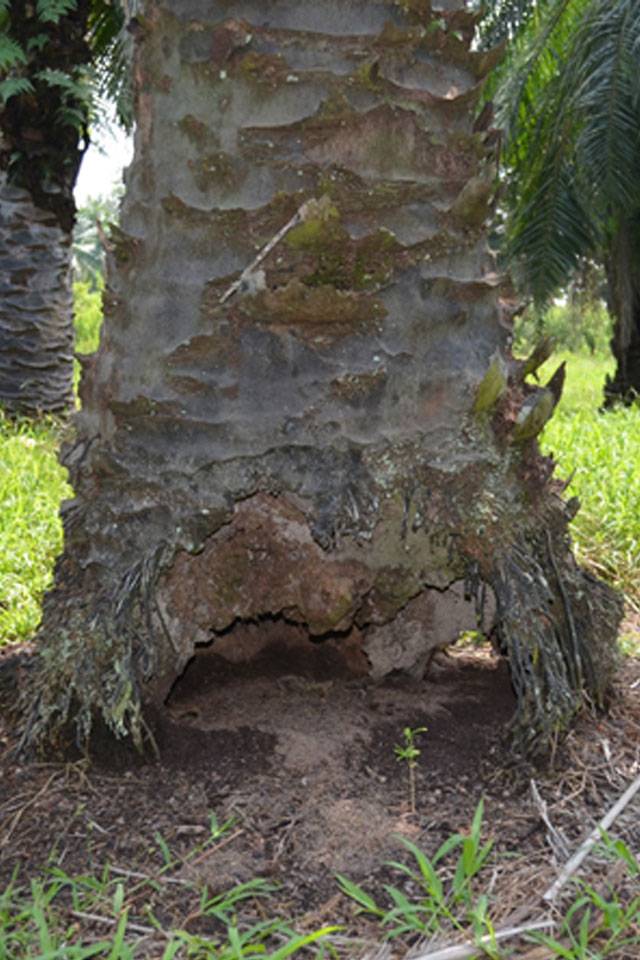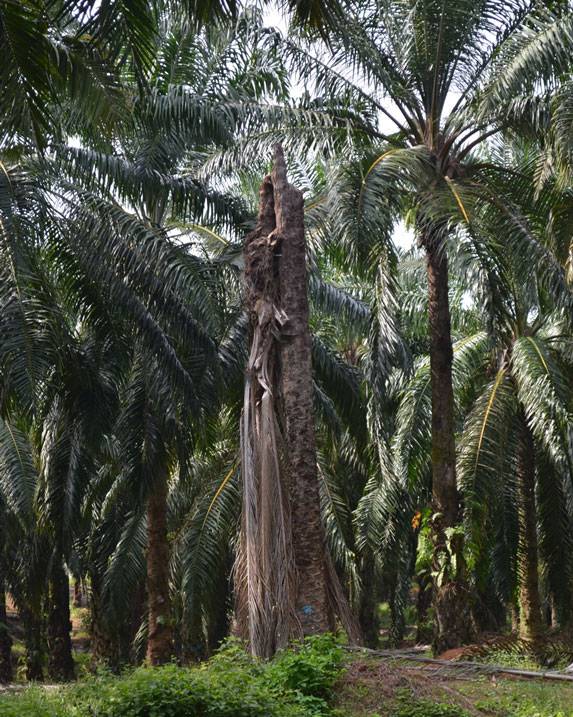Basal Stem Rot (BSR) Disease of Oil Palm
Basal stem rot (BSR) and upper stem rot (USR) caused by Ganoderma species are the most destructive diseases of oil palm (Elaeis guineensis Jacq) in Southeast Asia, especially Malaysia and Indonesia.
The BSR disease has been known to afflict oil palm since the early years when the crop was first introduced into this country.
In a recent survey, the incidence of BSR on estates in Malaysia was 7.4%, with 221 000 ha of affected areas (out of 2 985 871.95 ha surveyed); whereas on smallholders, 9.2% i.e. 3 450.70 ha affected (out of 37 359.81 ha surveyed). The yield losses due to Ganoderma disease were estimated to be about RM 1.5 billion.
The threat of Ganoderma to the oil palm industry in Malaysia warrants aggressive approaches in finding a solution to the disease. The situation is made even more critical with the active replanting of second generation oil palm in areas with a bad history of Ganoderma
7.4%, with 221 000 ha of affected areas (out of 2 985 871.95 ha surveyed)
9.2% i.e. 3 450.70 ha affected (out of 37 359.81 ha surveyed)


MPOB has over the years developed and disseminated several key technologies related to biology, detection, control and management of Ganoderma disease. Some of the BSR disease control and management have been documented and are being implemented in several oil palm plantations and smallholdings in Malaysia.
Until 2021, MPOB has developed and disseminated 51 technologies on Ganoderma with eight technologies on biology; seven technologies on early detection; and 32 technologies on control and management. These technologies have been actively disseminated to the oil palm industry members through seminars, field demonstrations and hands-on training.
What you should know about BSR disease

BSR disease symptoms
The usual first symptoms of infection by Ganoderma spp. are similar to those of drought conditions where the young leaves failed to open.
The situation results in a number of fully elongated but unopened spears that are normally seen in the centre of the crown. This indicates that the stem is already extensively damaged, so that water uptake is restricted. In old palms, the lower fronds collapse, hanging vertically downwards from the point of attachment to the trunk. This is followed by the drooping of younger fronds, which turn pale green or yellowish and dieback from the tip. The whole crown of the palm may then fall off, or the trunk may collapse.
